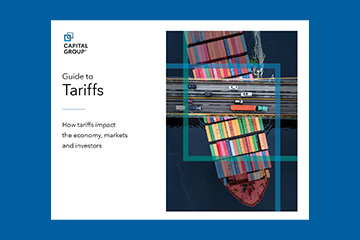The latest round of tariffs launched by the U.S. government in early April prompted a wave of criticism from world leaders, including some who say globalization is now dead. As a global investor for over four decades, I respectfully disagree. Globalization isn’t dead. It is, however, changing in a significant way.
Could it take a step back? Yes, I think it will. There are valid reasons for globalization to go through a policy refresh — at least, the type of globalization that we’ve become accustomed to since the early 1970s when trade expansion started a meteoric rise. In fact, the tectonic plates of world trade have been shifting for some time. Today's changes feel seismic, but trade as a percent of world GDP has moved roughly sideways since the global financial crisis between 2007 and 2009.
A decade later the COVID-19 pandemic revealed some of the problems associated with globalization, as did the Russia-Ukraine war. Both events exposed the vulnerabilities of global supply chains that rely too heavily on single trade routes.



